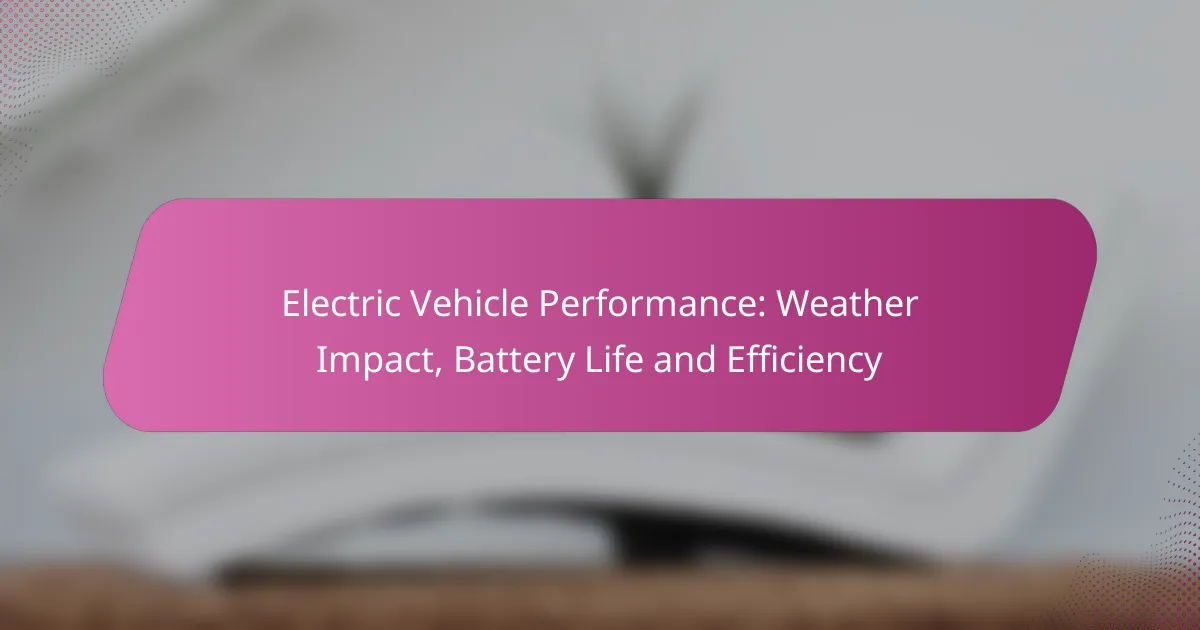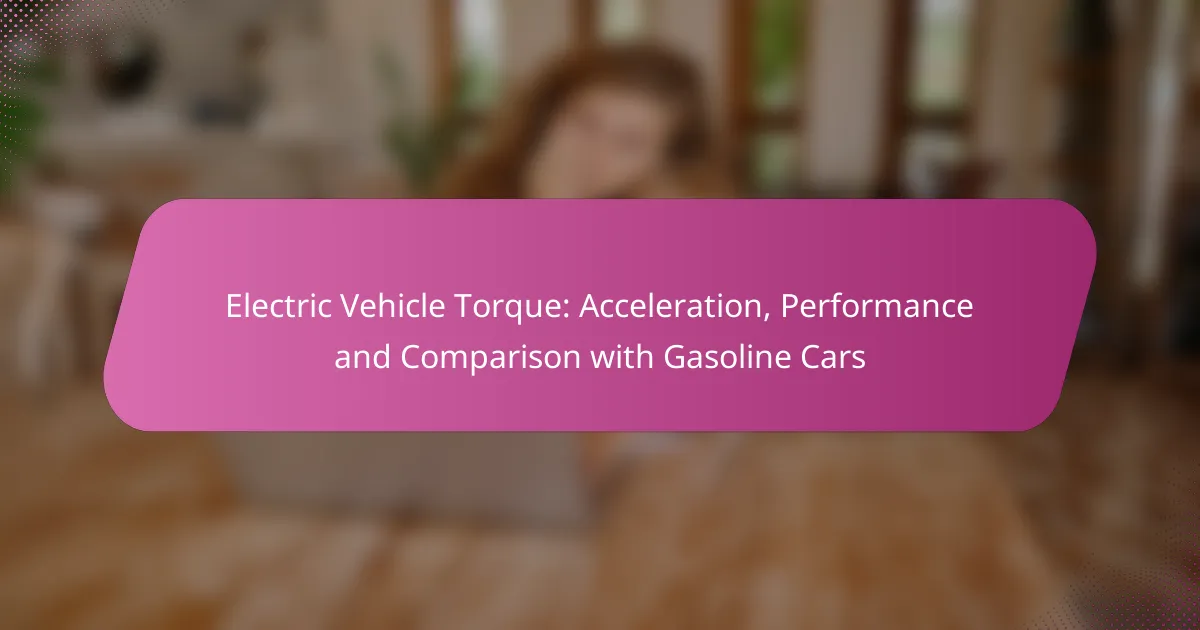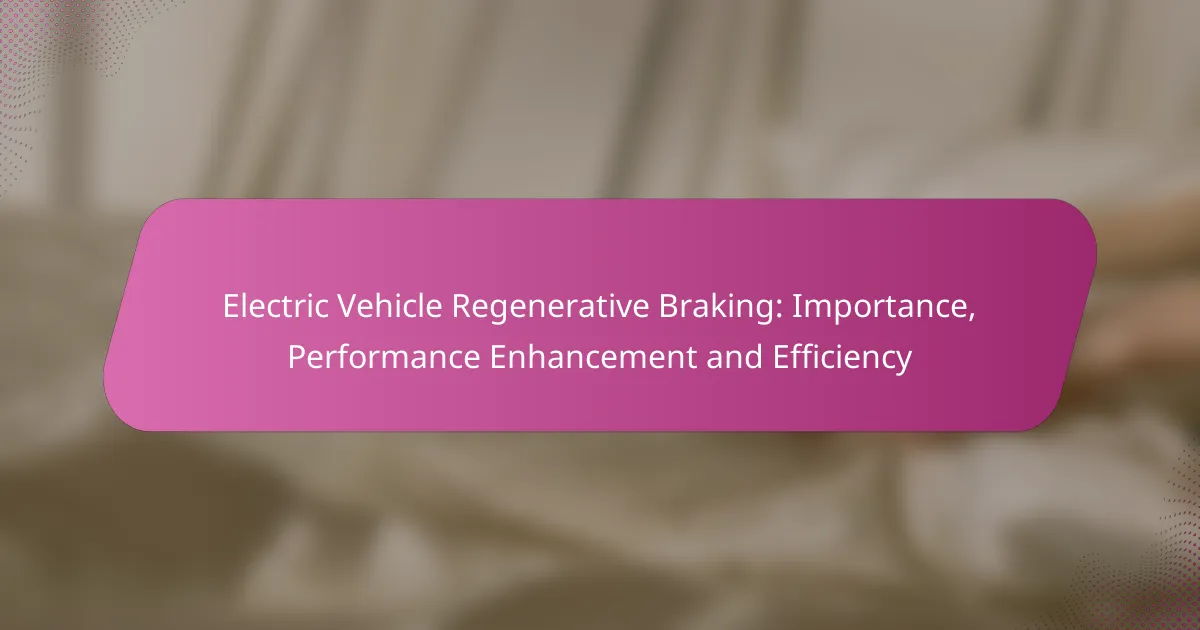Electric vehicle (EV) performance is heavily influenced by weather conditions, impacting battery efficiency, traction, and charging capabilities. Extreme temperatures and varying humidity levels can lead to reduced range and altered driving dynamics, necessitating specific practices to maintain battery life and optimize efficiency. By adopting tailored charging habits and driving strategies, EV owners can enhance their vehicle’s performance in diverse climates.

How does weather impact electric vehicle performance?
Weather significantly affects electric vehicle (EV) performance, particularly in terms of battery efficiency, traction, and charging capabilities. Extreme temperatures, precipitation, and humidity can lead to reduced range and altered driving dynamics.
Temperature effects on battery efficiency
Temperature plays a crucial role in battery efficiency, with both high and low extremes negatively impacting performance. In cold weather, battery capacity can drop by 20-30%, leading to reduced driving range. Conversely, high temperatures can accelerate battery degradation, potentially shortening overall lifespan.
To mitigate these effects, consider preconditioning your EV while it’s still plugged in, which warms the battery and cabin before driving. Additionally, parking in shaded or insulated areas can help maintain optimal battery temperatures.
Impact of rain and snow on traction
Rain and snow can significantly affect traction, impacting acceleration and braking. Wet or icy roads can lead to reduced grip, increasing the risk of skidding. EVs, with their instant torque delivery, may require more careful acceleration in slippery conditions.
To enhance safety, equip your EV with winter tires when driving in snowy conditions. These tires provide better traction and handling compared to standard all-season tires, especially in temperatures below 7°C (45°F).
Effects of humidity on charging
Humidity can influence charging efficiency and safety. High humidity levels may lead to condensation in charging ports, potentially causing connectivity issues or short circuits. Conversely, low humidity can lead to static electricity buildup, which may also affect charging performance.
To ensure safe charging, regularly inspect charging ports for moisture and keep them clean. If charging outdoors in humid conditions, consider using a protective cover for the charging port to minimize exposure to moisture.

What are the best practices for maintaining battery life in different climates?
Maintaining battery life in varying climates involves adopting specific practices tailored to temperature and humidity conditions. Key strategies include optimizing charging habits, managing temperature effectively, and performing regular maintenance checks.
Optimal charging habits
Charging your electric vehicle (EV) at the right times can significantly enhance battery longevity. Aim to charge during moderate temperatures, ideally between 20°C and 25°C (68°F and 77°F), to avoid stress on the battery.
Utilize smart charging features that allow you to schedule charging during off-peak hours, which can also save on electricity costs. Avoid letting the battery drop below 20% frequently, as deep discharges can shorten battery life.
Temperature management strategies
Extreme temperatures can adversely affect battery performance. In hot climates, park in shaded areas or garages to keep the battery cool, and consider using thermal management systems if available.
In cold weather, precondition your vehicle while it’s still plugged in to warm the battery before driving. This practice not only improves efficiency but also helps maintain battery health during winter months.
Regular maintenance tips
Regular maintenance is crucial for optimal battery performance. Schedule periodic inspections to check for software updates and battery health diagnostics, which can identify potential issues early.
Keep the battery terminals clean and free from corrosion, as this can affect charging efficiency. Additionally, monitor tire pressure and overall vehicle condition, as these factors can influence energy consumption and battery life.
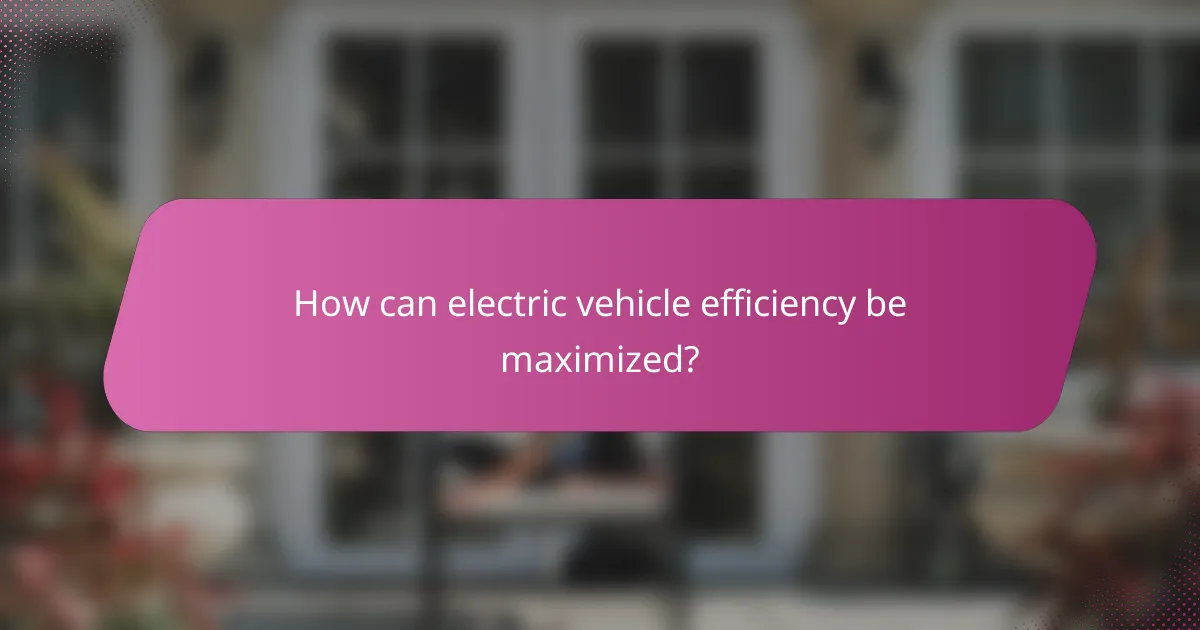
How can electric vehicle efficiency be maximized?
Maximizing electric vehicle efficiency involves adopting specific driving practices, utilizing regenerative braking, and selecting optimal routes. These strategies can significantly enhance battery life and overall performance, especially in varying weather conditions.
Driving techniques for energy conservation
Adopting energy-efficient driving techniques can greatly improve electric vehicle efficiency. Smooth acceleration and gradual braking help maintain momentum and reduce energy consumption. Aim for a steady speed, ideally between 45-65 mph, as this range typically offers the best efficiency.
Additionally, minimizing rapid starts and stops can conserve battery power. Use cruise control on highways when safe to do so, as it helps maintain a constant speed and reduces unnecessary energy expenditure.
Use of regenerative braking
Regenerative braking is a key feature in electric vehicles that captures energy usually lost during braking and feeds it back into the battery. This process can extend the driving range by recovering up to 70% of the energy used during acceleration, depending on driving conditions and techniques.
To maximize the benefits of regenerative braking, anticipate stops and decelerate gradually. Many electric vehicles allow drivers to adjust the level of regenerative braking, so experiment with settings to find the most efficient balance for your driving style.
Choosing energy-efficient routes
Selecting energy-efficient routes can significantly impact overall electric vehicle performance. Use navigation apps that provide real-time traffic updates and suggest routes with less congestion, as stop-and-go traffic can drain battery life quickly.
Consider routes that avoid steep hills or heavy traffic areas, as these can increase energy consumption. If available, opt for routes that include charging stations, allowing for convenient recharging during longer trips. Planning ahead can help maintain efficiency and extend driving range.

What are the key factors affecting electric vehicle range?
The key factors affecting electric vehicle (EV) range include battery capacity and health, vehicle weight and aerodynamics, and accessory power consumption. Understanding these elements helps drivers optimize their EV’s performance under various conditions.
Battery capacity and health
Battery capacity directly influences how far an electric vehicle can travel on a single charge. A larger capacity typically translates to a longer range, but battery health is equally crucial; as batteries age, their ability to hold a charge diminishes, reducing overall range.
Regular maintenance and monitoring of battery health can help extend its lifespan. Drivers should be aware of factors like temperature extremes, which can negatively impact battery performance and efficiency.
Weight and aerodynamics
The weight of an electric vehicle significantly affects its range. Heavier vehicles require more energy to move, which can lead to a shorter distance per charge. Aerodynamics also play a vital role; a streamlined design reduces air resistance, allowing for better efficiency and longer range.
When selecting an EV, consider both weight and design features that enhance aerodynamics, such as a low profile or smooth contours. These factors can improve energy efficiency, especially at higher speeds.
Accessory power consumption
Accessory power consumption refers to the energy used by features like heating, air conditioning, and infotainment systems. These systems can draw significant power from the battery, impacting the overall range of the vehicle.
To maximize range, drivers should use accessories judiciously. For instance, pre-conditioning the cabin while the vehicle is still plugged in can help conserve battery power during trips. Additionally, using energy-efficient settings can further reduce consumption.
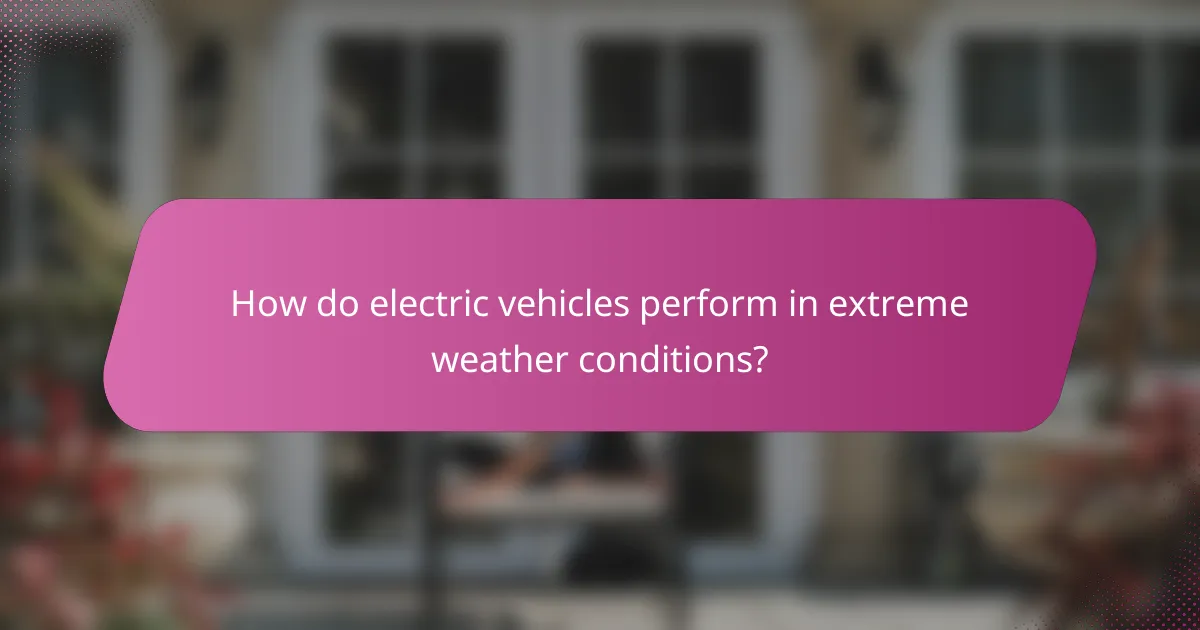
How do electric vehicles perform in extreme weather conditions?
Electric vehicles (EVs) can experience significant performance variations in extreme weather conditions, affecting their range, efficiency, and battery life. Cold and hot climates each present unique challenges that can impact how well an EV operates.
Performance in cold climates
In cold climates, electric vehicles often see reduced battery efficiency and range. Battery chemistry can slow down in low temperatures, leading to a decrease in available power and energy storage. Drivers may experience a range reduction of around 20-40% in frigid conditions.
To mitigate these effects, many EVs come equipped with battery thermal management systems that help maintain optimal operating temperatures. Preconditioning the battery while the vehicle is still plugged in can also help improve performance before driving.
Performance in hot climates
Hot climates can lead to overheating of the battery, which may reduce its lifespan and efficiency. High temperatures can cause the battery to degrade more quickly, potentially leading to a range decrease of about 10-30%. Additionally, the use of air conditioning can further strain the battery’s power supply.
To counteract these issues, some EVs feature active cooling systems that help regulate battery temperature. Parking in shaded areas or using a garage can also help keep the vehicle cooler and maintain battery health.
Adaptations for severe weather
Manufacturers are increasingly designing electric vehicles with adaptations for severe weather conditions. Features such as enhanced insulation, improved heating systems, and advanced battery management technologies are becoming standard in newer models.
Drivers can take practical steps to optimize their EV performance in extreme weather, such as using eco-driving modes, minimizing the use of heating and cooling systems when possible, and regularly checking tire pressure, as it can fluctuate with temperature changes.
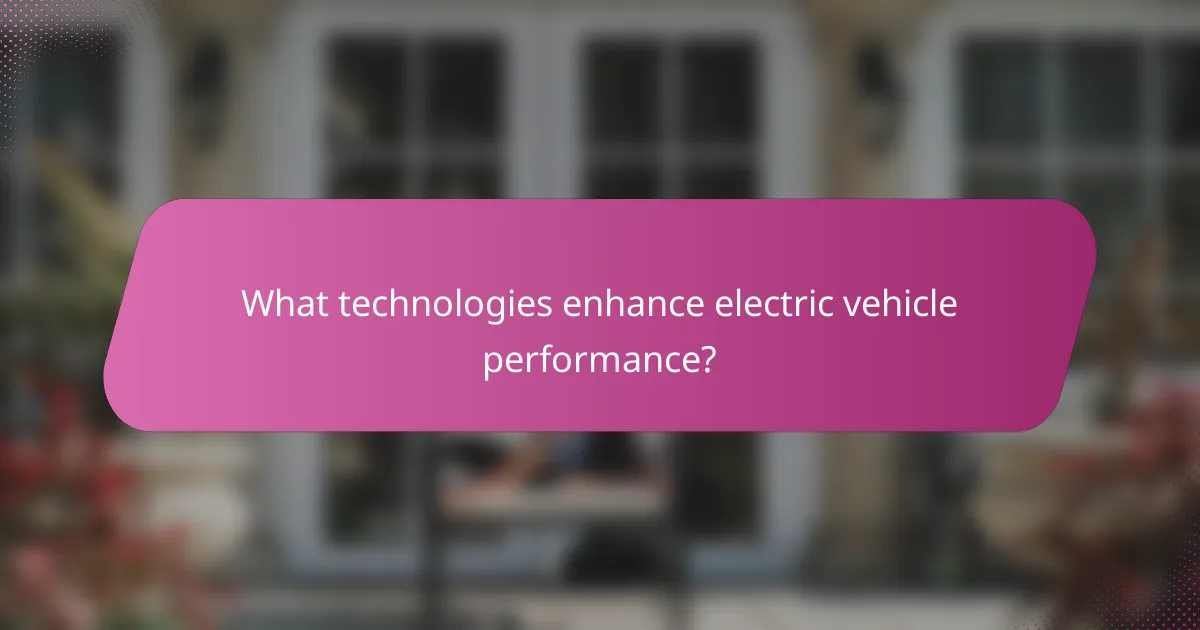
What technologies enhance electric vehicle performance?
Technologies that enhance electric vehicle (EV) performance include advanced battery management systems, regenerative braking, and efficient thermal management. These innovations work together to improve battery life, efficiency, and overall driving experience, adapting to various conditions and usage patterns.
Advanced battery management systems
Advanced battery management systems (BMS) play a crucial role in optimizing the performance of electric vehicles. They monitor battery health, charge levels, and temperature, ensuring safe and efficient operation. By managing these factors, a BMS can extend battery life and enhance energy efficiency.
These systems utilize algorithms to balance the charge across individual cells, preventing overcharging or deep discharging, which can degrade battery performance. For instance, a well-designed BMS can help maintain battery capacity above 80% even after several years of use, significantly improving longevity.
When selecting an EV, consider the sophistication of its BMS. Look for features like cell balancing, temperature control, and real-time monitoring capabilities. A robust BMS can lead to better performance and reduced maintenance costs over the vehicle’s lifespan.
